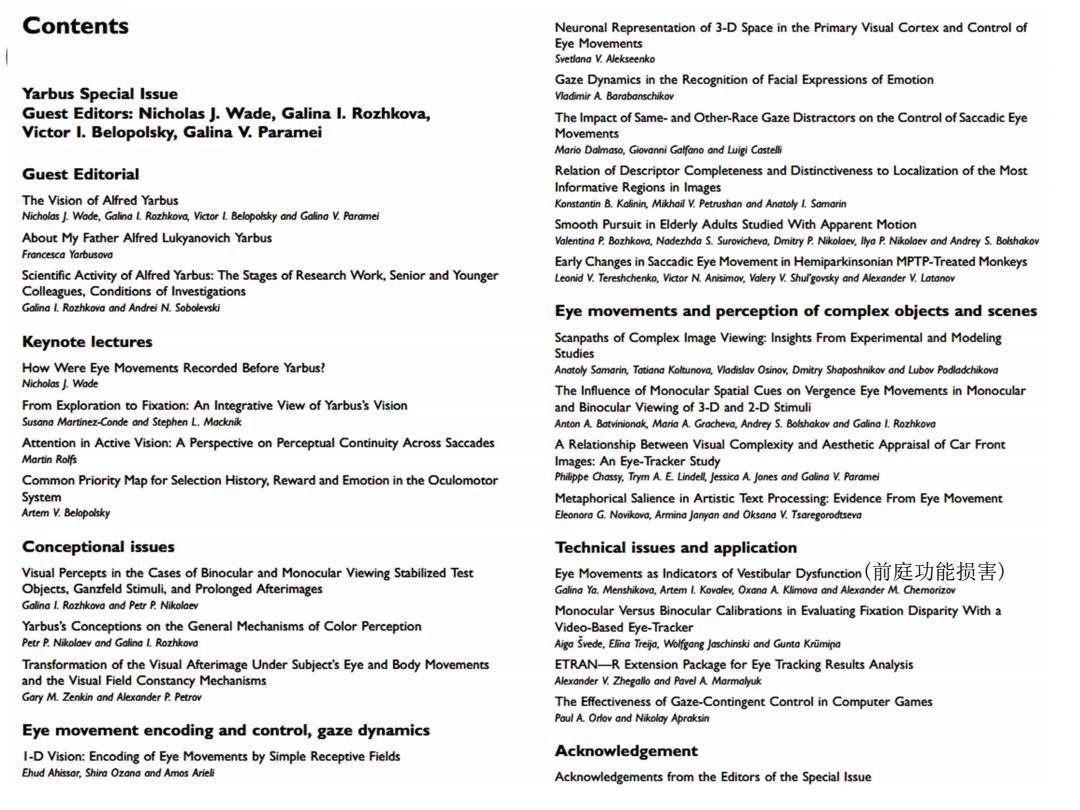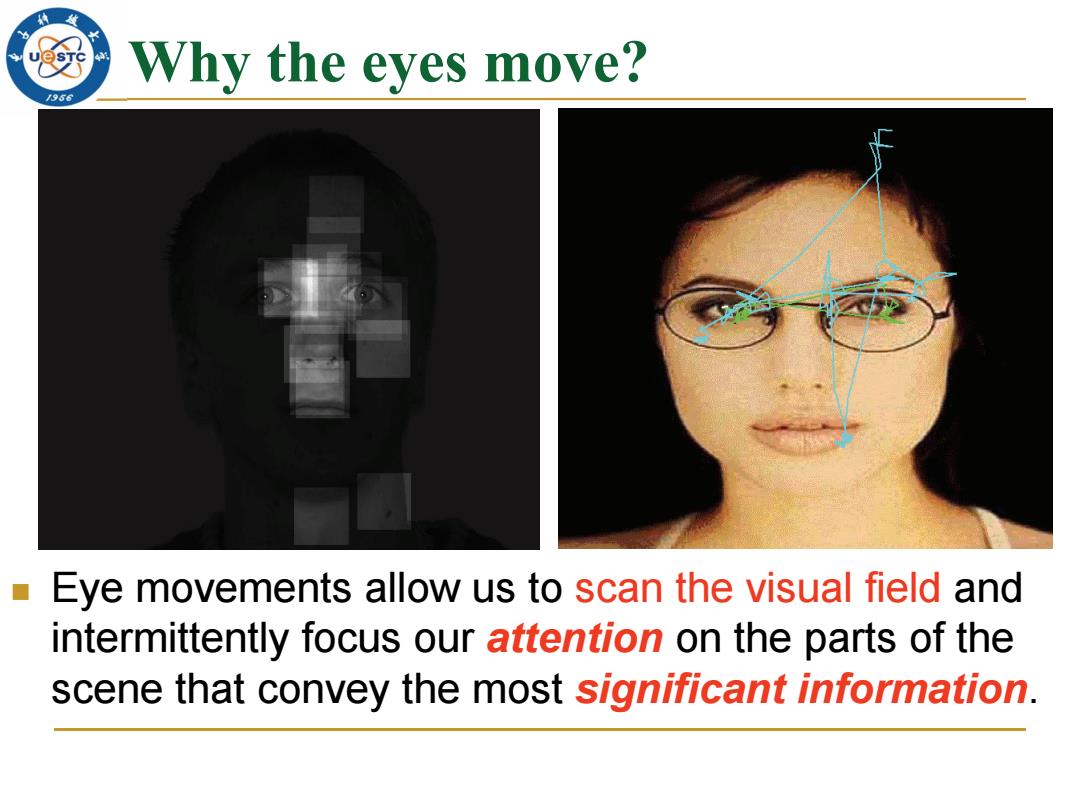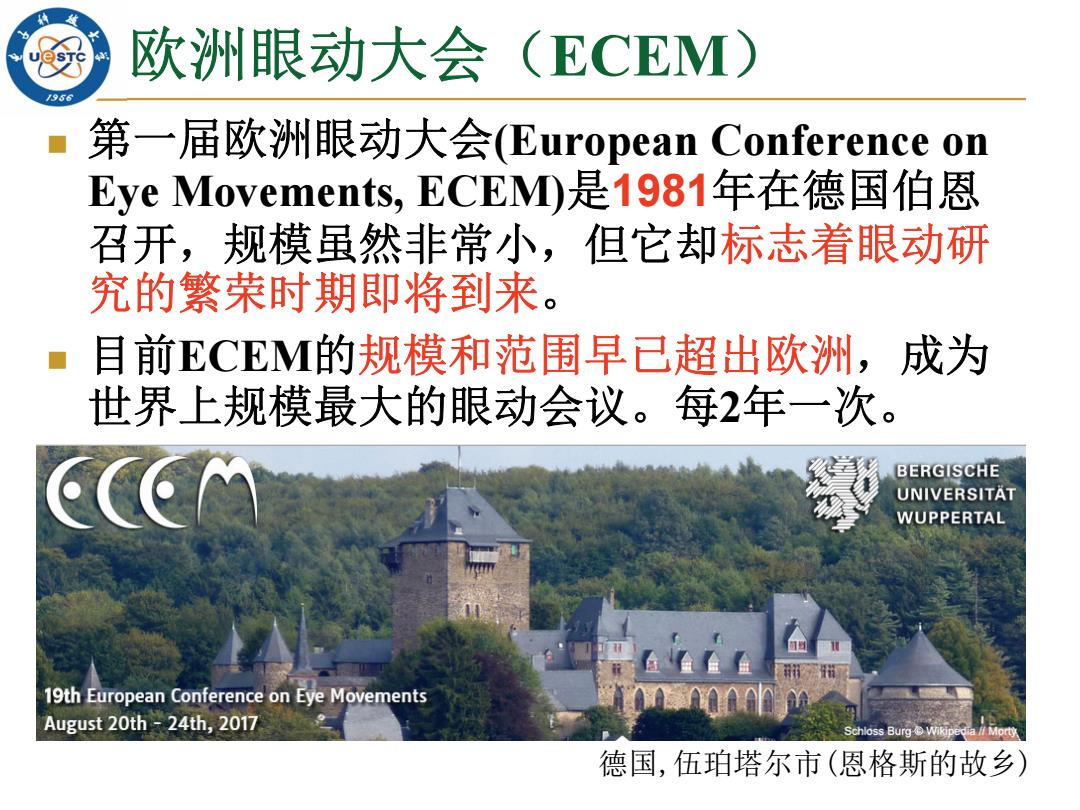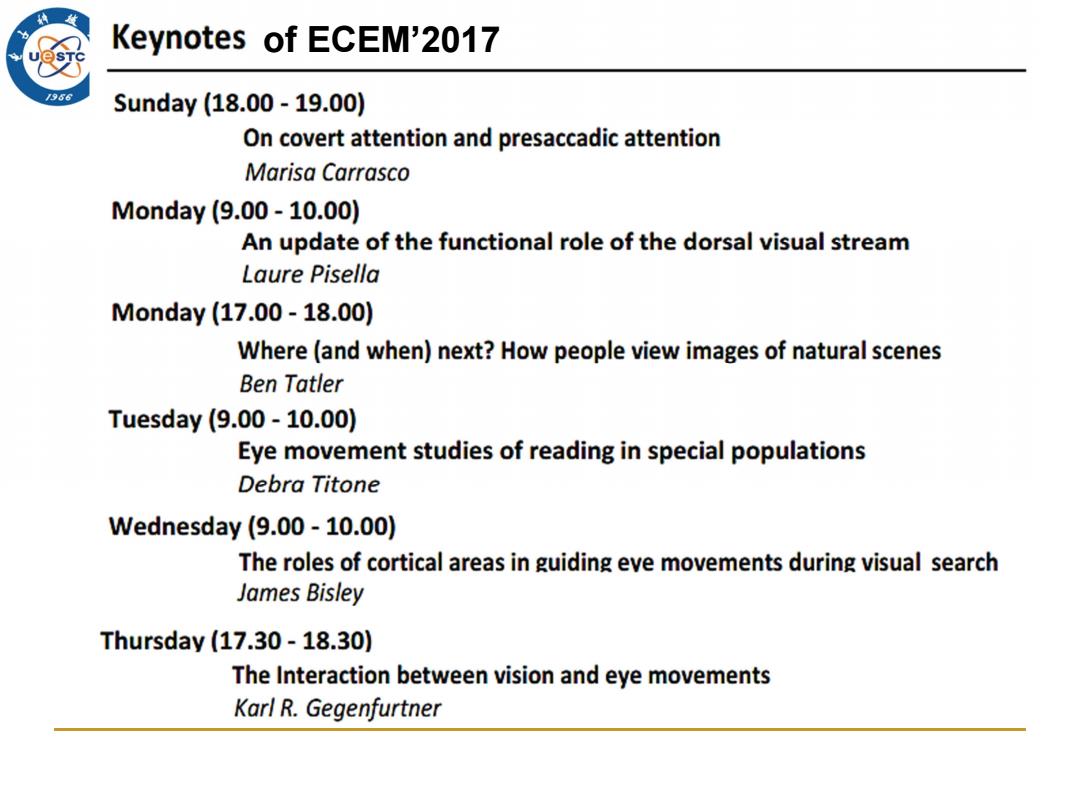
Contents Neuronal Representation of 3-D Space in the Primary Visual Cortex and Control of Eye Movements Svetlano V.Alekseenko Gaze Dynamics in the Recognition of Facial Expressions of Emotion Yarbus Special Issue Vladimir A Barabanschikov Guest Editors:Nicholas J.Wade,Galina I.Rozhkova, The Impact of Same-and Other-Race Gaze Distractors on the Control of Saccadic Eye Victor I.Belopolsky,Galina V.Paramei Movements Mario Dalmaso,Giovanni Galfono and Luigi Castelli Guest Editorial Relation of Descriptor Completeness and Distinctiveness to Localization of the Most Informative Regions in Images The Vision of Alfred Yarbus Konstontin B.Kalinin.Mikhail V.Petrushan and Anatoly I.Samarin Nicholas J.Wade,Galina I.Rozhkova,Victor L.Belopolsky and Galina V.Paramei Smooth Pursuit in Elderly Adults Studied With Apparent Motion About My Father Alfred Lukyanovich Yarbus Valentina P.Bozhkova,Nadezhda S.Surovichevo,Dmitry P.Nikolaev,llya P.Nikoloev and Andrey S.Bolshakov Francesca Yarbusova Early Changes in Saccadic Eye Movement in Hemiparkinsonian MPTP-Treated Monkeys Scientific Activity of Alfred Yarbus:The Stages of Research Work,Senior and Younger Leonid V.Tereshchenko,Victor N.Anisimov,Valery V.Shurgovsky and Alexander V.Latanov Colleagues,Conditions of Investigations Galina I.Rozhkova and Andrei N.Sobolevski Eye movements and perception of complex objects and scenes Keynote lectures Scanpaths of Complex Image Viewing:Insights From Experimental and Modeling Studies How Were Eye Movements Recorded Before Yarbus? Anatoly Samarin,Tatiana Koltunova,Vladislav Osinov,Dmitry Shoposhnikov and Lubov Podladchikova Nicholas↓Wade The Influence of Monocular Spatial Cues on Vergence Eye Movements in Monocular From Exploration to Fixation:An Integrative View of Yarbus's Vision and Binocular Viewing of 3-D and 2-D Stimuli Susana Martinez-Conde and Stephen L.Macknik Anton A Batvinionak,Maria A.Grocheva,Andrey S.Bolshakov and Galina I.Rozhkova Attention in Active Vision:A Perspective on Perceptual Continuity Across Saccades A Relationship Between Visual Complexity and Aesthetic Appraisal of Car Front Martin Rolfs Images:An Eye-Tracker Study Common Priority Map for Selection History,Reward and Emotion in the Oculomotor Philippe Chassy.Trym A.E.Lindell,Jessica A Jones and Galina V.Paramei System Metaphorical Salience in Artistic Text Processing:Evidence From Eye Movement Artem V.Belopolsky Eleonora G.Novikova,Armina Janyan and Oksana V.Tsaregorodtseva Conceptional issues Technical issues and application Visual Percepts in the Cases of Binocular and Monocular Viewing Stabilized Test Eye Movementsas Indicators of Vestibular Dysfunction(前庭功能损害) Objects,Ganzfeld Stimuli,and Prolonged Afterimages Galina Ya.Menshikova,Artem I.Kovalev,Oxana A Klimova and Alexander M.Chemorizov Galina I.Rozhkova and Petr P.Nikolaev Monocular Versus Binocular Calibrations in Evaluating Fixation Disparity With a Yarbus's Conceptions on the General Mechanisms of Color Perception Video-Based Eye-Tracker Petr P.Nikoloev and Galina I.Rozhkova Aiga Svede,Elina Treja,Wolfgang Jaschinski and Gunta Krumipa Transformation of the Visual Afterimage Under Subject's Eye and Body Movements ETRAN-R Extension Package for Eye Tracking Results Analysis and the Visual Field Constancy Mechanisms Alexander V.Zhegallo and Pavel A Marmalyuk Gary M.Zenkin and Alexander P.Petrov The Effectiveness of Gaze-Contingent Control in Computer Games Poul A.Orlov and Nikolay Apraksin Eye movement encoding and control,gaze dynamics I-D Vision:Encoding of Eye Movements by Simple Receptive Fields Acknowledgement Ehud Ahissar,Shira Ozana and Amos Arie Acknowledgements from the Editors of the Special Issue
(前庭功能损害)

Why the eyes move? /956 Eye movements allow us to scan the visual field and intermittently focus our attention on the parts of the scene that convey the most significant information
Eye movements allow us to scan the visual field and intermittently focus our attention on the parts of the scene that convey the most significant information. Why the eyes move?

Why the eyes move? /956 无视杆细胞区 A:For the best 神经节细胞 visual acuity 中央凹 双极细胞 视杆细胞 Sclera Choroid 视锥细胞 Retina 0d066a5时品6866可a。o0可6565b6566do055中1 色素细胞层 色亲上皮 Cornea Pupil 视杆细胞 规维细胞 Lens Optic nerve Iris 双根细胞 驭极细施 Ciliary body 节细胞 节细胞
A: For the best visual acuity Why the eyes move?

欧洲眼动大会( ECEM /956 第一届欧洲眼动大会(European Conference on Eye Movements,ECEM)是1981年在德国伯恩 召开,规模虽然非常小,但它却标志着眼动研 究的繁荣时期即将到来 目前ECEM的规模和范围早已超出欧洲,成为 世界上规模最大的眼动会议。每2年一次。 BERGISCHE UNIVERSITAT WUPPERTAL 19th European Conference on Eye Movements August 20th -24th,2017 Schloss Burg V Morty 德国,伍珀塔尔市(恩格斯的故乡)
欧洲眼动大会(ECEM ) 第一届欧洲眼动大会(European Conference on Eye Movements, ECEM) 是1981年在德国伯恩 召开,规模虽然非常小,但它却标志着眼动研 究的繁荣时期即将到来 。 目前ECEM 的规模和范围早已超出欧洲,成为 世界上规模最大的眼动会议。每 2年一次。 德国,伍珀塔尔市(恩格斯的故乡)

Keynotes of ECEM'2017 /986 Sunday(18.00-19.00) On covert attention and presaccadic attention Marisa Carrasco Monday(9.00-10.00) An update of the functional role of the dorsal visual stream Laure Pisella Monday(17.00-18.00) Where(and when)next?How people view images of natural scenes Ben Tatler Tuesday(9.00-10.00) Eye movement studies of reading in special populations Debra Titone Wednesday (9.00-10.00) The roles of cortical areas in guiding eve movements during visual search James Bisley Thursday(17.30-18.30 The Interaction between vision and eye movements Karl R.Gegenfurtner
of ECEM’2017